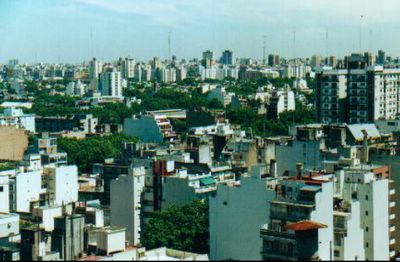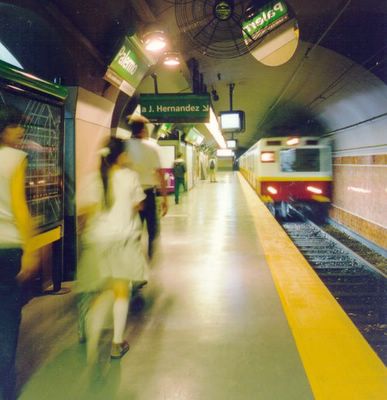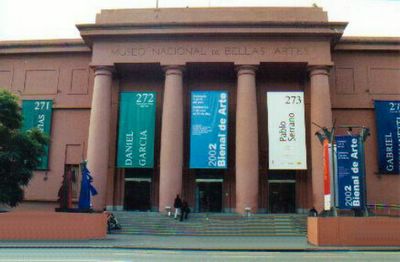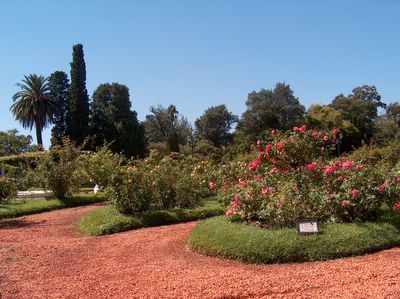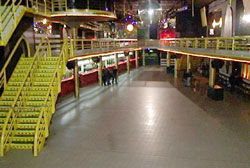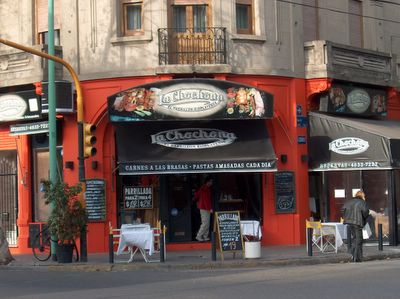The supermarket as a window into the heart of a city
 ..
..
Banderas de la República Argentina y Ciudad Autónoma de Buenos Aires

Supermercado Coto
Avenida Cabildo, Barrio Nuñez
Ciudad Autónoma de Buenos Aires
República de la Argentina
Item: In the 15 items or less check out line, a woman in her late 60s or early 70s removes one item at a time from the small, hand-held, blue, supermarket basket and places each one carefully in front of the cashier so it can be scanned, all the while keeping an eye on the subtotal as it steadily climbs. She has obviously calculated well in advance the precise amount of money she can spend, because when the total reaches her budgeted amount, she hands the remaining items to the cashier and asks her to please have them returned to the shelf. She then opens a small change purse, extracts two small denomination bills, and counts out small change in the exact amount. The cashier accepts the money, checks to make sure it is correct, finalizes the transaction, and gives the woman her receipt, which she then folds and tucks away in her change purse. The cashier, a young and very courteous woman, thanks the older woman with a smile, and hands her two plastic bags. The older woman then picks her way through the small group of shoppers, store employees, and security guards in the front of the store to the automatic doors leading to the very busy street.
Item: Outside the store, on the curb, just to the left of the front entrance, a short Bolivian or Peruvian woman with pronounced buck teeth, has a sidewalk display of small quantities of vegetables and fruits, of roughly the same variety and often of a superior quality to those offered in the produce section of the supermarket, but that sell for approximately 20% less, neatly arranged in wooden boxes. Three women and two men are queued up waiting for a fourth woman to complete and pay for her selection. A member of the woman's family has a display just to the side of and across the sidewalk from the produce display, against the outside wall of the supermarket. This display features DVD's of most, if not all, of the latest movies showing in the first-run theaters.
Item: Just inside and to the right of the supermarket's front entrance, numerous store employees, all young males, congregate around stacks of white plastic baskets each containing numerous plastic sacks of groceries. Each stack carries a hand-written piece of paper showing an address, with a copy of a cash register receipt stapled to it. They are organizing home deliveries, a service which virtually every retail outlet in Buenos Aires, from supermarkets to pharmacies to ice cream stores to hardware stores, provides free of charge. (Note: Buenos Aires is the ONLY place I have seen in my travels where every McDonalds offers home delivery.)
Item: Soft drinks in Coto, as in supermarkets everywhere, occupy a great deal of shelf space. In Coto, they fill full five head-high shelves that run almost the width of the store. Directly across the aisle, occupying a space of almost identical size, is an enormous variety of different brands of mate.
According to Wikipedia...
Mate (pronounced /'ma.te/) is a highly caffeinated infusion prepared by steeping dried leaves of yerba mate (Ilex paraguariensis) in hot water. It is the national drink in Uruguay and Argentina[1] and a common social practice in Paraguay and parts of Chile and Brazil.

Mate gourd with bombilla
Item: A shopper, after all of his items have been rung up, produces a 100 peso note in payment. The cashier immediately asks if he has any smaller denomination bills, or, if not, the correct amount of small change. The shopper responds in the negative and the cashier reluctantly accepts the 100 peso note. After holding it up to the light and carefully examining it to insure its authenticity, the cashier rings for assistance from the supervisor who circulates among the cashiers at the front of the store. A few minutes later when the supervisor arrives, the cashier shows her the 100 peso note. The supervisor takes it and disappears into a small office just to the side of the front entrance. She returns a minute or two later with change for the note in bills and coins. The cashier completes the transaction and hands the correct change to the customer.
Labels: Argentina, Barrio Nuñez, Buenos Aires, Coto
[Permalink]
 .....
.....
 .....
.....


 .....
.....
































